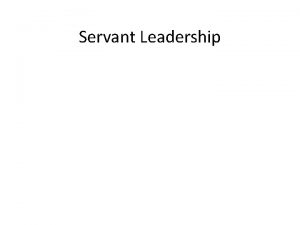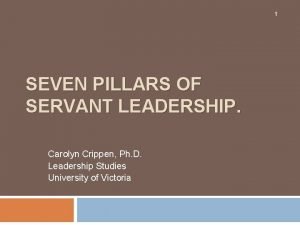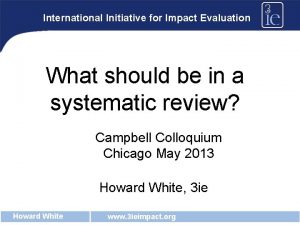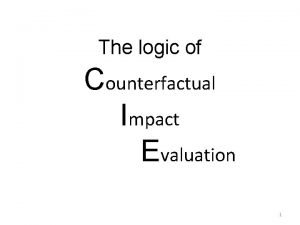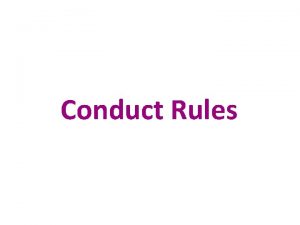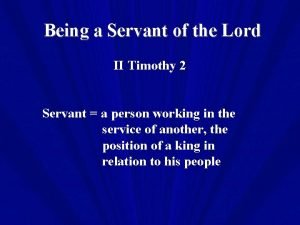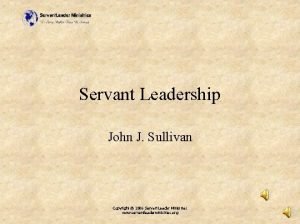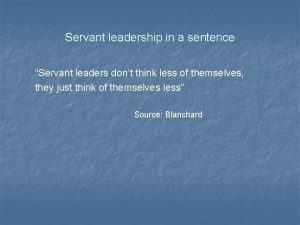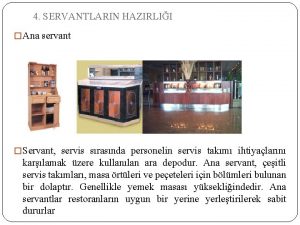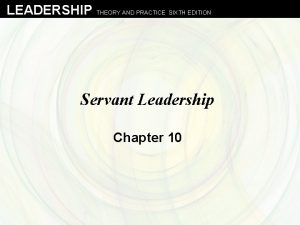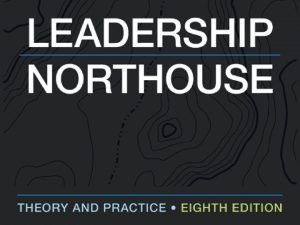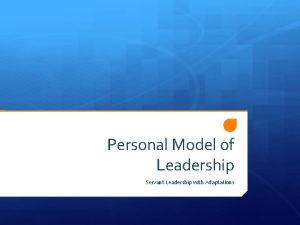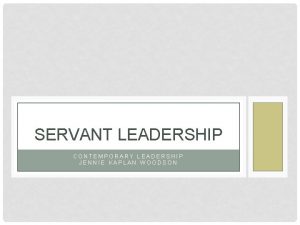Impact evaluation of the Servant Leadership Program LArche




































- Slides: 36

Impact evaluation of the Servant Leadership Program L'Arche Canada Line le. Blanc, Ph. D. Annie Bérubé, Ph. D. et Geneviève Saulnier, doctoral candidate Université du Québec en Outaouais Department of Psychoeducation and Psychology September 2019

Introduction OUTLINE OF THE PRESENTATION 1. Summary of the program 2. Methodology 3. Results: Component 1 - Implementation Component 2 - Impact 4. Findings 5. Recommendations for action

- Several months to understand how it works and the vocabulary of L'Arche Canada, as well as the Servant Leadership Program; INTRODUCTION W H Y D I DT H E R E S E A R C HT A K E T I M ET O C O M P L E T? E - Validate our understanding of the program with targeted people from L'Arche; - Reformat the program and develop a logic model (activities, processes, results); - Link the program to scientific literature; - Identify standardized measuring instruments to operationalize the concept of leadership; - relaunched data collection by contacting community leaders through a former L’Arche Canada assistant.

project start Write protocol Ethics Preliminary report Questions Project end Describe prog. mai 2017 juin 2017 sept 2017 Validate prog. oct 2017 janv 2018 Validate protocol juin 2018 oct 2018 avril 2019 juin 2019 auditing sept 2019 déc 2019 Final report interviews déc 2019

Link to scientific literature Servant Leadership, developed by Greenleaf (1970), is characterized by a strong ethical foundation that encourages leaders to demonstrate personal integrity and put their skills to work for others (Liden et al 2008).

Link to scientific literature The effects of training tend to persist over time, which justifies efforts to systematically develop leadership qualities and capacities (Page and Wong, 2000).

Link to scientific literature Need for scientific knowledge on: The relationship between theoretical model of the program, its pedagogical practices and the anticipated changes of the participants

1. The program … in summary Recruitment Activities Centralized and better coordinated Visibility in the community Best fit candidates Learning and Development Activities Expected Results Training and probation assistants Training for house and community leaders Assistants recognized and valued in their role at L'Arche Canada Activities and opportunities: Reviews and goals Development plan Circle of Learning Roles and Goals meetings Live L'Arche's values and mission in the community, by developing its leadership

2. Research Methodology COMPONENT 1 IMPLEMENTATION COMPONENT 2 IMPACT Research Question Is the program understood by the House Leaders? Are there opportunities? To what extent is the program implemented? ◦ Not or little ◦ Partially ◦ Completely What is the general picture of the leadership of the assistants? Do assistants from communities that fully implement the program rate their qualities and abilities as leaders more positively than those communities that have little or partially implemented the program? What hinders or facilitates implementation? Data collection A questionnaire answered by the House Leaders A questionnaire answered by the Assistants and sent by the Community Leaders; A one-on-one interview with 8 Assistants from a A personalized telephone conversation; household in which the program was successfully A question in the questionnaire completed by the implemented. Assistants.

Data collection and analysis (continued) Quantitative results: vstarting point for estimating assistants’ perceptions of their leadership Qualitative results: vdeepen our understanding of the impact of the program beyond self-assessment of qualities and capacities. . what is L'Arche’s contribution?

Measuring instruments COMPONENT 1 IMPLEMENTATION Questionnaire for House and Program Leaders 10 questions: Description and understanding of the program; implementation of activities; presence of opportunities for progress and leadership; means, degree of implementation; obstacles and aids in implementation COMPONENT 2 IMPACT Questionnaire Servant Leadership Profile Self-Assessment (Page and Wong, 2000) 98 statements divided into 4 dimensions including 3 subdimensions. Scale from 1 to 7 Interview guide (Bec. K, 2014) 8 questions: experience, reasons, feelings, perception of others, role, anticipation of consequences, simplification of problems, values.

Results Obtained COMPONENT 1

Is the program understood by the House Leaders? Are there opportunities for progress and leadership? 49 HOUSE LEADERS RESPONDED OUT OF A POSSIBLE 200. THE 49 PARTICIPANTS ARE SPREAD OVER ALMOST ALL COMMUNITIES.

Shape model, program, guide, tool, resource, guidelines, resource Objectives of the project • • • Content values, traditions, goals, foundations, community, expectations from leaders Means constructive communication, conversation, feedback, goal setting, training People involved assistants, leaders, community and house leaders, all employees Impact • • understand the roots of the philosophy of L’Arche; to make the identity and mission of L’Arche applicable and attainable; connect with others and the community; promote the values of L’Arche; act according to the values common language about values, common direction, enrich life in the community, fulfill one’s role in the community, individual development and learning Answer to an open-ended question about understanding

Understanding of program & of leadership and development opportunities for assistants House Leaders (n: 49) 16. 3 44. 9 4. 1 30. 6 4. 1 49 12. 2 14. 3 4. 1 32. 7 63. 3 2 18. 4 4. 1 0 very good poor very poor no response leadership 16. 3 44. 9 30. 6 4. 1 development 12. 2 49 32. 7 2 4. 1 understanding 14. 3 63. 3 18. 4 0 4. 1 understanding development leadership

The reliability of the program: To what extent are the activities proposed by the program implemented with the assistants? WHICH ACTIVITIES ARE OFFERED: ALL, SOME, NONE

Program Activities Offered House Leaders (n=49) 53. 1 24. 5 10. 2 12. 2 34. 7 36. 7 32. 7 12. 2 20. 4 32. 7 review 18. 4 all 26. 5 some action plan goals 12. 2 53. 1 circle of learning 8. 2 none 12. 2 no response

To what degree is the program implemented? VERY LITTLE, PARTIALLY, COMPLETELY

Degree of program implementation House Leaders (n=49) 69. 4 12. 2 6. 1 very little partially completely no response

Obstacles as percieved by House Leaders Lack of time Lack of systematic training Team The program Time spent on the program versus time spent with members Outside of hours, on free time Time should be allocated to the program, 4 hours administration not enough Some received the training a long time ago, others did not, others only consult the website Transition in teams Communication with everyone is not easy A short time bringing everyone together Program not sufficiently user-friendly and accessible The terms "servant leadership" and "core values" need to be clarified Language barriers Lack of understanding of the complex and extensive program, the program should be simplified More or less suitable for core members Values difficult to measure, not easy to discuss the issue of values with supervisors. . . question the evaluative aspect of some values such as joy. The program touches on personal identity and it's fine as a main thread, but don't push too hard. . Delivery of the program Difficult to convince of the importance of the program A lot of documents, difficult to find your way around Expectations of assistants and the mandate given are sometimes less well perceived Support to implement the program To be able to refer to a person in charge at the national level who can speak French House Leaders are left to themselves, no accountability, free to do so or not Disparity in the implementation from one home to another, some assistants are interested and others not Planning and monitoring should be more systematic, supervised

Aids perceived by House Leaders Tools Meeting agenda, "daily planner" Reviews, feedback Roles and Goals Meetings Circles of Learning Core Value Newsletters & monthly activities Bubbles "Know me” module Role of House Leader Embody the values and mission of L’Arche and Transmit this to the assistants Self-assessment and standards Commitment to learning Availability to the team Favourable attitudes towards the program Reminders to the Assistant Coordinators Continual follow-up of the house leader Support of Leaders Guidelines on how to implement the program Website

Partial Results PORTRAIT OF LEADERSHIP OF ASSISTANTS: COMPARISON BETWEEN THOSE WHO ARE EXPOSED TO AN IMPLEMENTED PROGRAM AND THOSE WHO ARE NOT

Assistants’ Leadership Self-assessment Servant Leadership • Oriented towards self • Oriented towards others • Task-oriented • Process-oriented Instrument of measure (Page and Wong, 2000)

integrity self others Orientation towards… humility attitudes of service concern for others ability to act develop vision tasks/duties goals lead modeling process team building sharing power

Self-assessment of leadership dimensions* Assistants (n=145) tasks 5. 61 process 5. 77 others 5. 8 self average * Scale of 1 to 7 5. 89 self 5. 89 others 5. 8 process 5. 77 tasks 5. 61

L’Arche Canada’s contribution to leadership* Assistants (n=145) was already present 18. 5 developed because of L'Arche 24. 1 was already present but was further developed by L'Arche 53 0 *Two response choices: yes or no 10 20 30 40 50 60

Impact of the Program Assistants who perceive that the program is fully implemented have higher averages on all four dimensions of leadership.

4 dimensions of leadership compared to implementation: implemented (n=36) vs. little or partially implemented (n=109) implemented 6 little/partial implenentation 5. 95 5. 9 5. 87 5. 76 5. 77 5. 69 5. 7 5. 6 5. 58 5. 5 5. 4 5. 3 self others tasks Impact of the program process

3. Statistical impact of the program Dimensions significatif Self (integrity, humility, attitudes of service) Being validated Others (concern, power to act, development) Being validated Tasks (vision, goals, leadership) Being validated Process (modeling, team building, power sharing) Being validated

4. Findings concerning Implementation Overall, a good understanding of the program and relatively effective delivery process; The perception of opportunities for progress and leadership is rather low; The reliability of the program lacks consistency and follow-up: Ø not all activities are used; Ø not all assistants benefit from the program Ø a degree of flexibility is given to households and communities The degree of implementation varies from one household to another, one community to another and one region to another.

4. Findings concerning Impact Assistants positively assess their leadership skills and quality, especially for the self and other dimensions. Task and process dimensions have lower rates. The program is promising as long as it is implemented with consistency. Leadership is an outcome that deserves attention in order to meet one of L'Arche Canada's objectives, which is to bring the mission to life in a broader way. It may be relevant to assess the extent to which the effects of training persist over time. .

5. Recommendations for Action Component 1 • Simplify the program • Use the program theory developed by the researchers to disseminate it • Make explicit opportunities for progress and leadership; • Develop strategies to increase reliability; • Ensure a rigorous follow-up of the consistency of its implementation; • Identify the essential elements and those that • can be adapted; • Pay attention to the language issue; • Remove obstacles and strengthen aids. Component 2 • Use the questionnaire to recruit assistants; • Use the LC exit guide before leaving L'Arche to do a review; • Promote leadership experience at L'Arche Canada; • Disseminate the results of the program’s impact to leaders to increase its degree of implementation; • Continue on-going improvement and monitoring of the program

Conclusion Implementation of a program across Canada presents many complex challenges. Factors that influence implementation are not only individual but also organizational. Reflection on implementation involves all levels of responsibility at L’Arche Canada.

Next Steps Conduct interviews with 8 assistants to deepen understanding of L'Arche's contribution to leadership development. Analyze the data from interviews Write and distribute the final report

Thank you to the advisory committee of L'Arche Canada Thank you to the community leaders for their contribution to the recruitment of participants Conclusion & thanks Thanks to the house leaders and assistants who answered the questionnaires Thank you to the Board of Directors for the research contract Thanks to the two research assistants, Sarah Leclerc Saulnier and Pierre Marc Côté

References Beck, C. D. (2014). Antecedents of servant leadership: A mixed methods study. Journal of Leadership & Organizational Studies, 21(3), 299 -314. Greenleaf, R. K. (1997). Servant leadership: A journey into the nature of legitimate power and greatness, Mahwah, NJ, US: Paulist Press. Liden, R. C. , Wayne, S. J. , Zhao, H. , & Henderson, D. (2008). Servant leadership: Development of a multidimensional measure and multi-level assessment. The leadership quarterly, 19(2), 161177. Page, D. , & Wong, T. P. (2000). A conceptual framework for measuring servant leadership. The human factor in shaping the course of history and development, 69 -110. van Dierendonck, D. (2011). Servant leadership: A review and synthesis. Journal of Management, 37(4), 1228 -1261.
 Viaggio di enea mappa
Viaggio di enea mappa Difference between public servant and civil servant
Difference between public servant and civil servant What is servant leadership
What is servant leadership Servant leadership vs followership venn diagram
Servant leadership vs followership venn diagram Seven pillars of servant leadership
Seven pillars of servant leadership Servant leadership triangle
Servant leadership triangle Servant leadership northouse chapter 10 pdf
Servant leadership northouse chapter 10 pdf Servant leadership
Servant leadership Servant leadership definition
Servant leadership definition Servant leadership theory and practice
Servant leadership theory and practice Northouse 2001 transformational leadership
Northouse 2001 transformational leadership អភិសមាចា
អភិសមាចា Servant leadership webinar
Servant leadership webinar Followership and servant leadership
Followership and servant leadership Jjdidtiebuckle
Jjdidtiebuckle Servant leadership theory
Servant leadership theory 12 principles of servant leadership
12 principles of servant leadership International initiative for impact evaluation
International initiative for impact evaluation 70000/65
70000/65 Impact evaluation
Impact evaluation Collective impact evaluation
Collective impact evaluation High impact leadership
High impact leadership Leadership impact statement examples
Leadership impact statement examples Transactional vs transformational
Transactional vs transformational Adaptive management style
Adaptive management style Situational leadership vs adaptive leadership
Situational leadership vs adaptive leadership Short summary of merchant of venice
Short summary of merchant of venice Labservant tudelft
Labservant tudelft My servant the branch
My servant the branch The crucible act 1 character list
The crucible act 1 character list Chief servant meaning
Chief servant meaning Romeo and juliet prologue
Romeo and juliet prologue Romeo and juliet act 5 notes
Romeo and juliet act 5 notes Beadisciple com lay servant ministries
Beadisciple com lay servant ministries Is allah not sufficient for his servant meaning in urdu
Is allah not sufficient for his servant meaning in urdu Odisha govt servant conduct rules pdf
Odisha govt servant conduct rules pdf Faithful servant of god
Faithful servant of god


